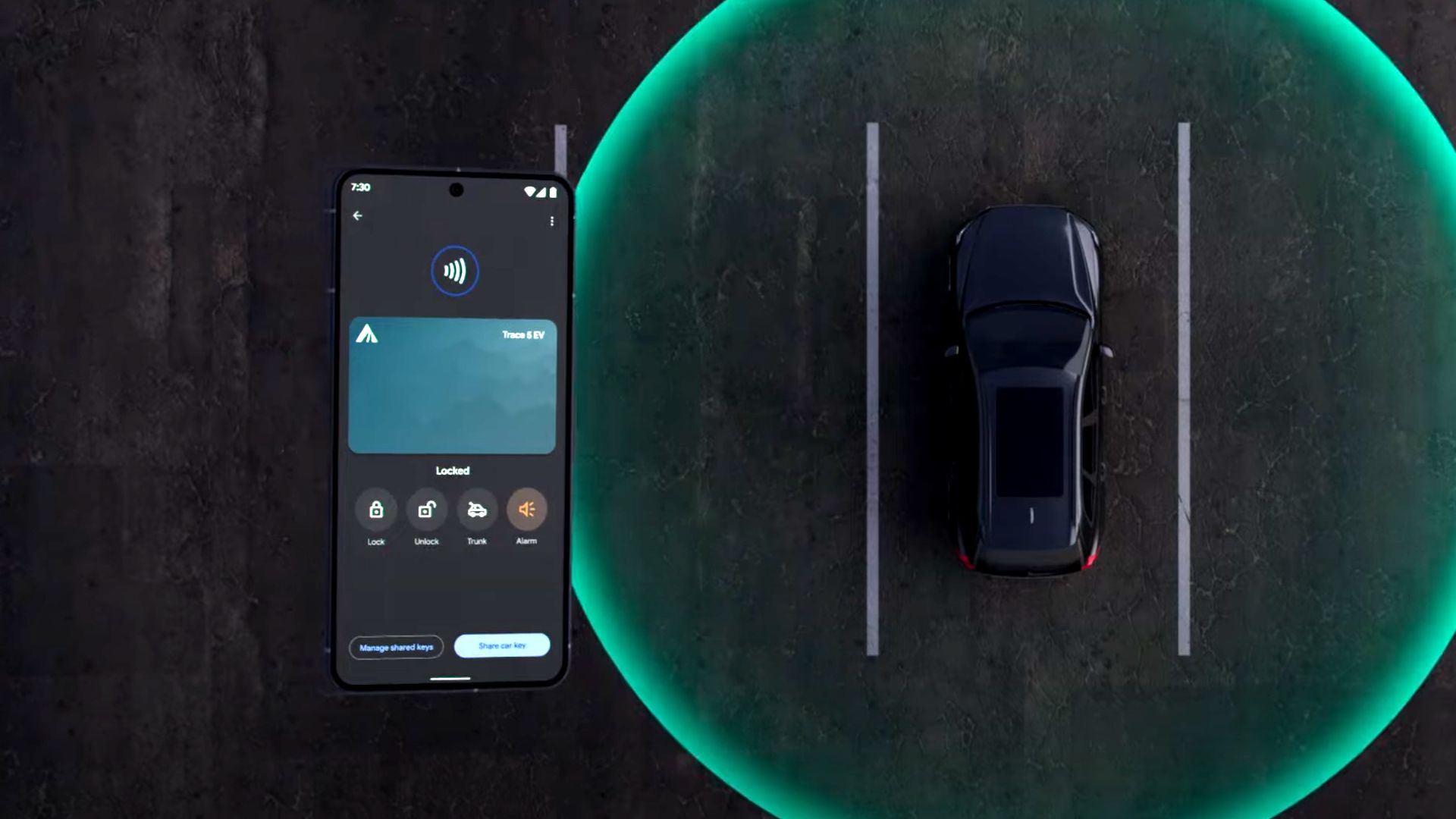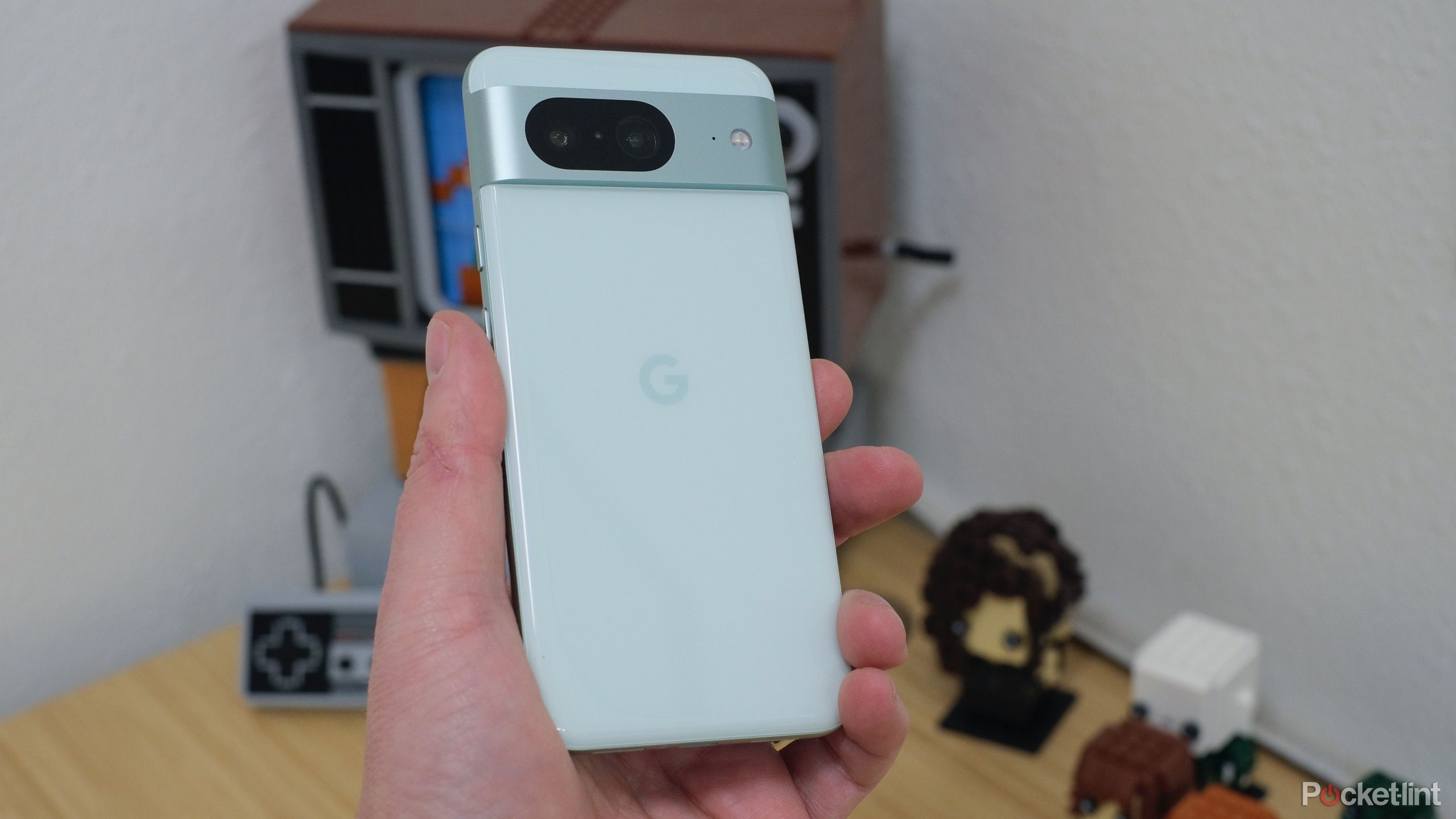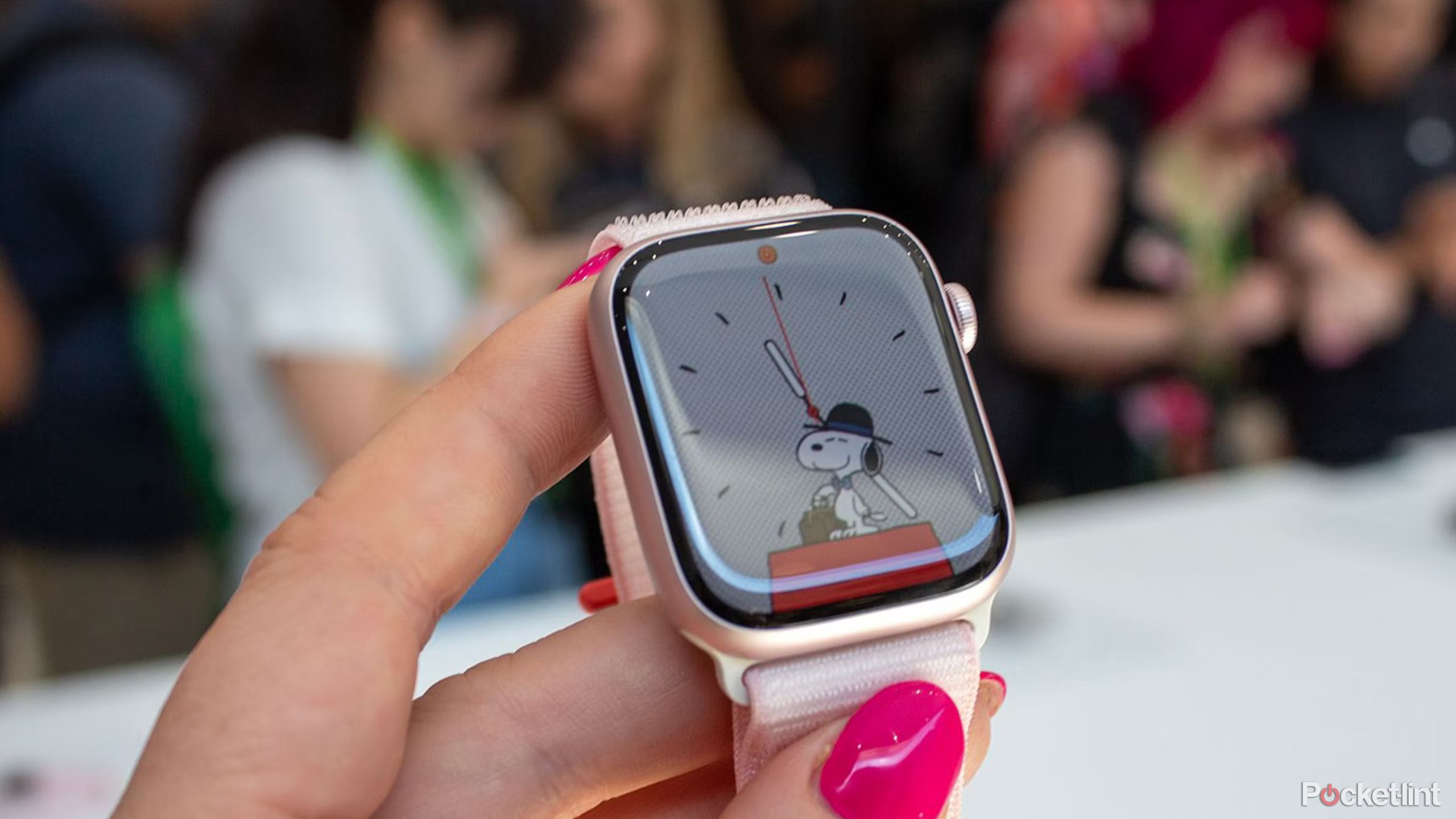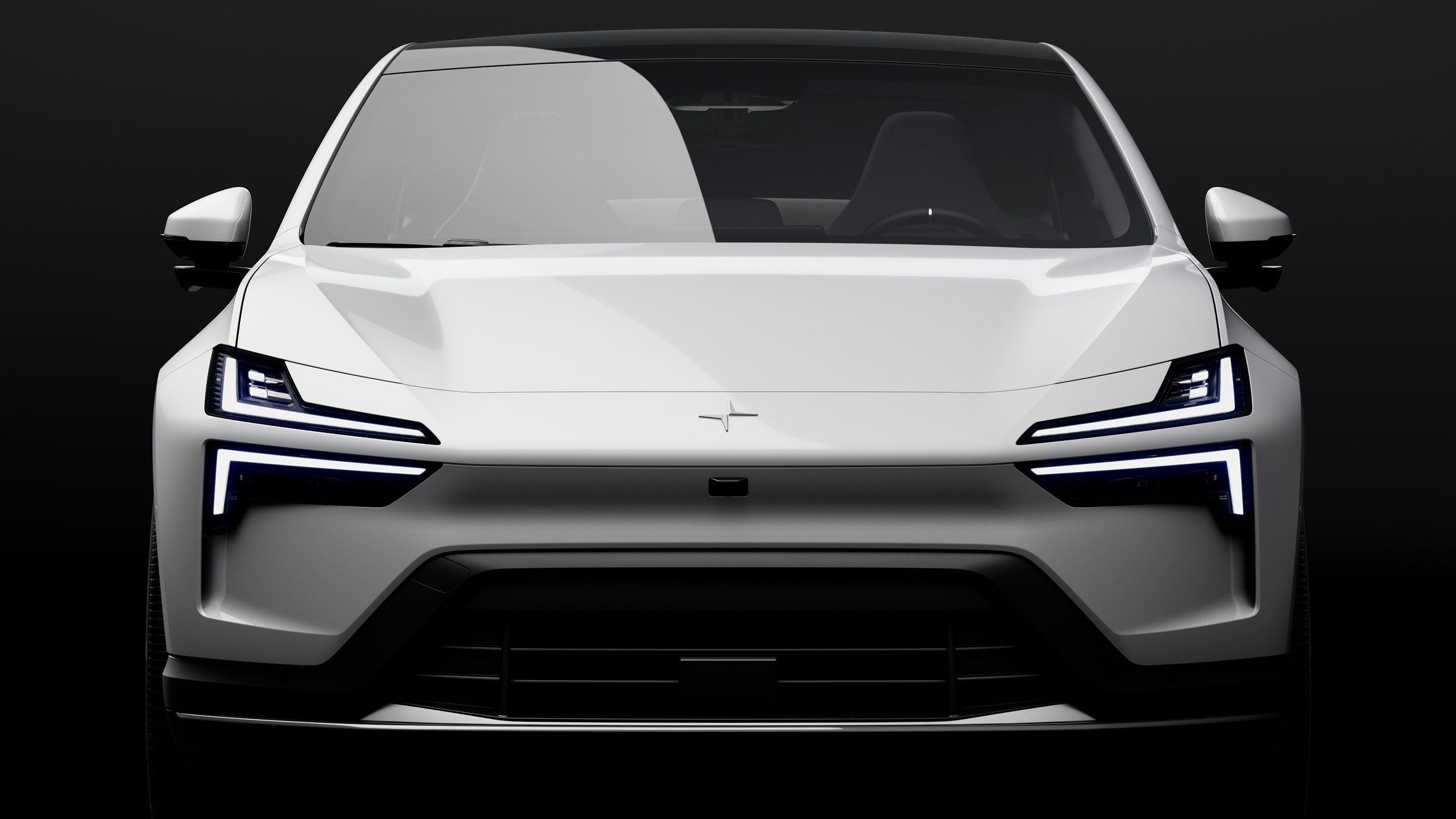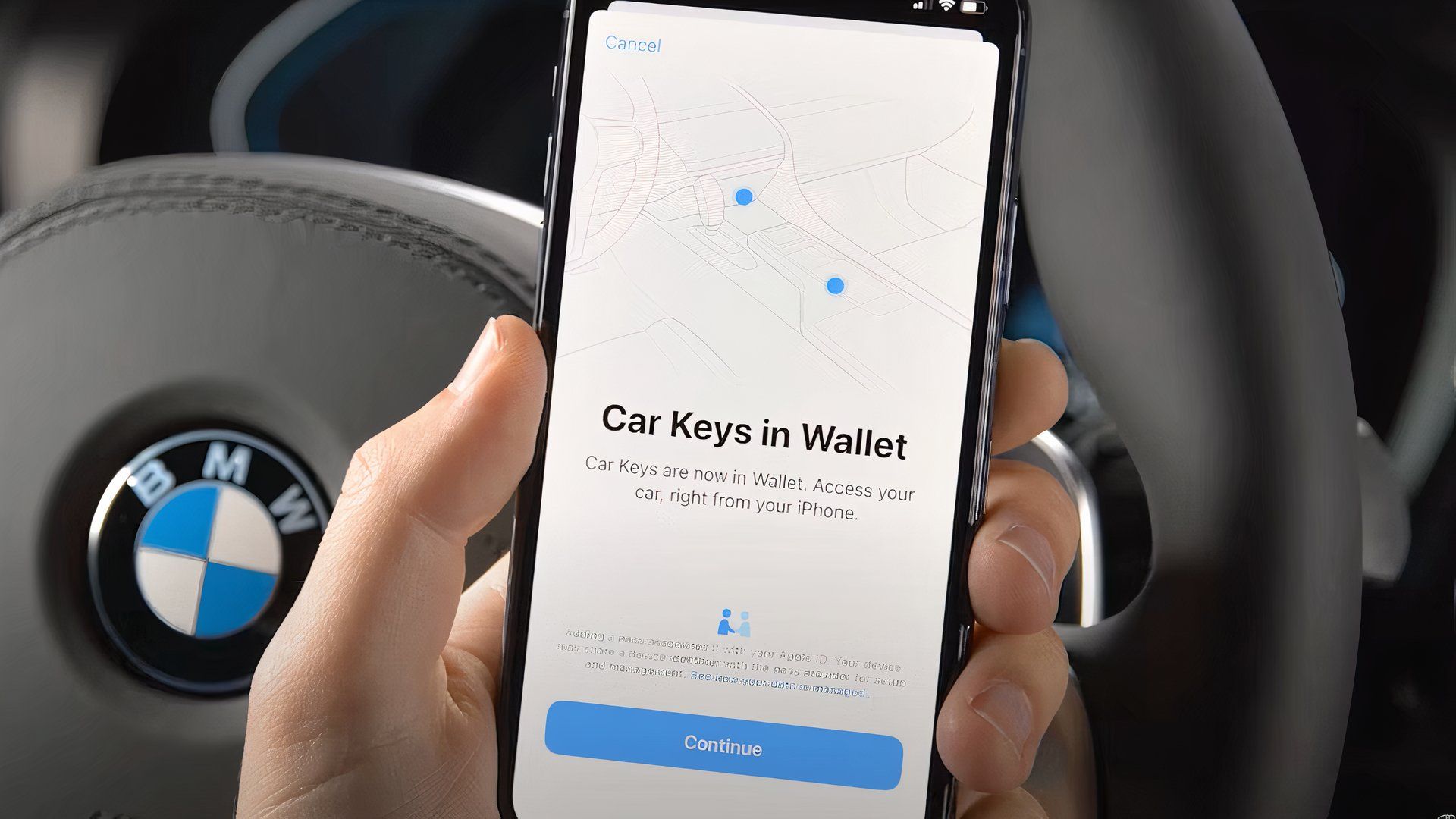Key Takeaways
- Apple and Google use similar underlying UWB, NFC, and Bluetooth technology.
- More cars are compatible with Android, but older iPhones work with Apple’s key tech.
- Expect both platforms to grow support in the next several years.
It’s still pretty common for fans to pit iPhones and Android devices against each other, even though the platforms are becoming increasingly homogenous. There are still some exclusive features, though — or if they’re not exclusive, there can be different implementations. Apple car key and Android digital car key are examples of the latter, since they obviously serve the same basic purpose.
So what are the similarities and gaps between the technologies? As we’ll learn, there’s no dramatic difference — instead it’s mostly a question of compatibility.
Core features and options
Virtually indistinguishable
Both Apple car key and Android digital car key rely on a mix of Bluetooth, NFC (near-field communications), and UWB (ultra-wideband). When UWB is present on both your phone and your car, it enables something called “passive entry” — your car can unlock automatically based on your presence, start when you sit down, and lock again when you get out. Apple does have a slight advantage here in that flagship iPhones have included UWB since 2019 — it took another two years for Android to join suit, and even now most supporting Android products are high-end devices from Google and Samsung. More on that later.
When UWB isn’t available, you can use NFC. This involves bringing your phone next to embedded readers located in door handles and/or the ignition. It’s standard with phone-based car keys, and in some cases automakers also require it for initial pairing.
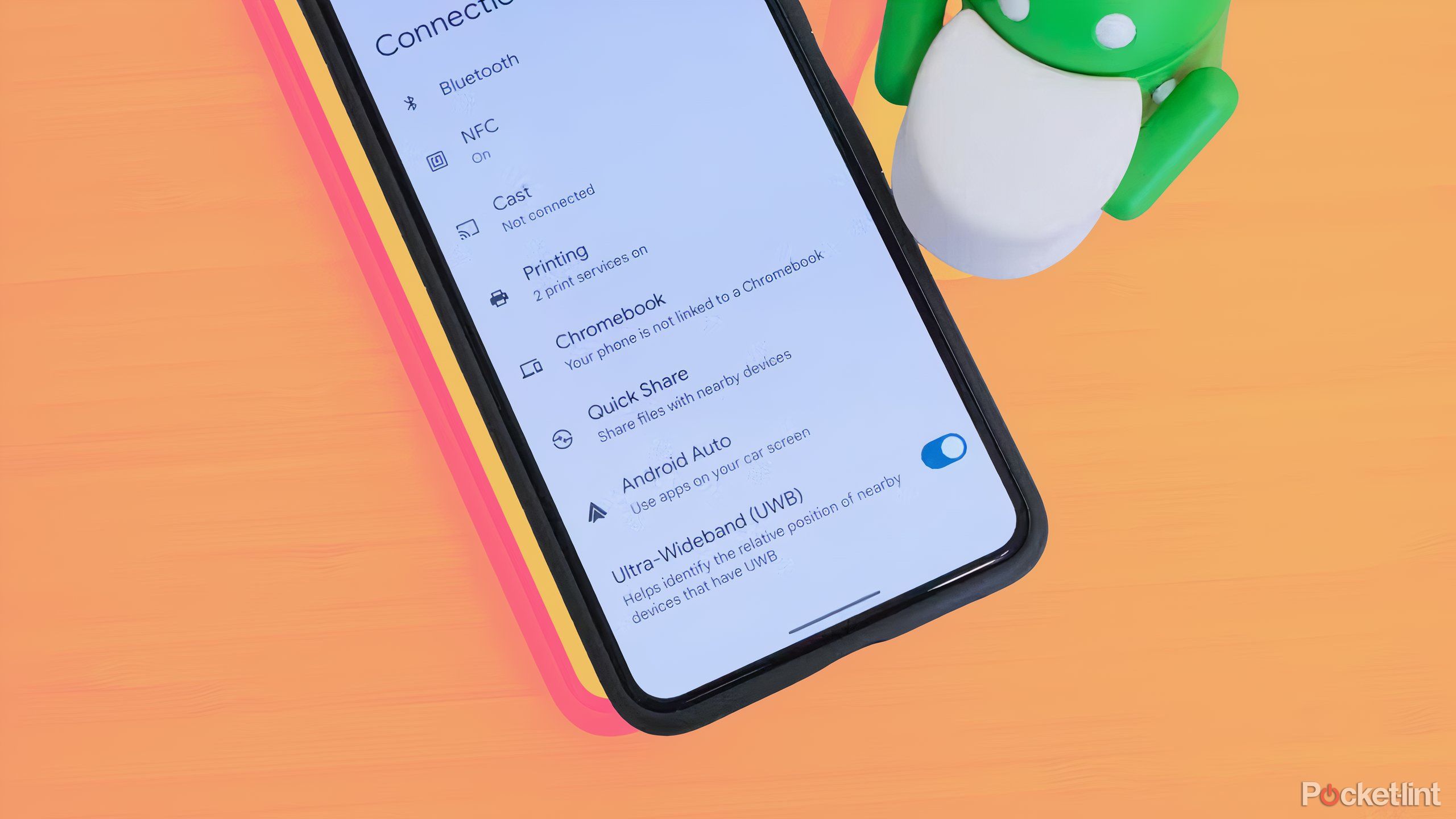
6 reasons you should enable ultra-wideband on your Android phone
Bluetooth is useful, but Android’s recent UWB development is on a whole other level.
With both platforms, Bluetooth enables remote locking and unlocking, as well as other functions like popping a trunk. You can’t start a car this way, however, presumably as a security precaution — much to the chagrin of people wanting to cool or warm up their cars. In fact neither Apple nor Google offer Wi-Fi connectivity, likely because hackers would love breaking into cars via the internet.
The similarities extend even to setup. You’ll normally be prompted to set up a key via an automaker’s app, an email message, or a dashboard display, and follow car-specific instructions to complete pairing. Once that’s done, it’s just a question of where the key ends up — Google Wallet or Samsung Wallet in the case of Android, or Apple Wallet in the case of iPhones. For UWB- or NFC-based entry, you likely won’t have to open these apps again (unless you change security settings), but you’ll always have to view your key to trigger Bluetooth controls. Apple and Google further support sharing keys with contacts, including restricting permissions in case someone is just a guest driver. You may need something like a key fob or activation code to complete the sharing exchange.
Phone support
Better keep up with the Joneses
Apple car key launched in 2020, while Android digital car key debuted a year later alongside Android 12. Apple has been better about backwards compatibility — as iPhones go, the oldest supported one is 2018’s iPhone XS. Only flagship models made since the iPhone 11 support UWB, but you can still use NFC and Bluetooth on the XS and second-generation iPhone SE.
Android digital car key is compatible with:
- All Google Pixel phones from the Pixel 6 onwards, including Fold models.
- Many Samsung S- and Z-series phones from the Galaxy S21+ onwards. As a rule, though, you’ll be setting up a Digital Key in Samsung Wallet.
- Other select devices running Android 12 or later. Check your phone manufacturer’s website.
Wearable support
Where is Google?
Apple wins this category hands-down. If you own an Apple Watch Series 5, SE, or later, any key you set up on your iPhone can be used on your wrist. The transfer may even happen automatically. Note though that Apple Watches have only supported UWB since the Series 6, and that excludes the SE lineup.
Bringing key tech to Wear OS — which is based on Android — has apparently been a low priority for Google. We’re not sure why, or when we might see that upgrade. Even the Pixel Watch 2 lacks a UWB chip, so Google might consider it more important to focus on phones until it has something to showcase.
Car support
Leaving Apple in the dust
Polestar
This is where Android takes the lead. Many, many automakers support that platform, whereas Apple is currently backed only by BMW, BYD, Kia, Lotus, Mercedes-Benz, and Hyundai/Genesis. Expect the lists for both platforms to grow, but for now, Android is in the lead.
Below are the models that support Apple car key so far. There are actually too many vehicles with Android digital car key to list here, so we included a roster of brands instead.
|
Brand |
Apple Car Key-supported car models (years 2021-2023, unless otherwise stated) |
Android Digital Car Key-supported car brands |
|---|---|---|
|
Audi |
– |
Yes |
|
Acura |
– |
Yes |
|
BMW |
1 Series, 2 Series, 3 Series, 4 Series, 5 Series, 6 Series, 8 Series, X5, X6, X7, X5 M, X6 M, Z4, i4 (2022-2023), iX (2022-2023), iX1 (2022-2023), iX3 (2022-2023), i3 (2023), i7 (2023), i5 (2024) |
Yes |
|
Buick |
– |
Yes |
|
Cadillac |
– |
Yes |
|
Chevrolet |
– |
Yes |
|
Chrysler |
– |
Yes |
|
Dodge |
– |
Yes |
|
Fiat |
– |
Yes |
|
Ford |
– |
Yes |
|
Genesis |
GV60 (2023), G90 (2023) |
Yes |
|
GMC |
– |
Yes |
|
Honda |
– |
Yes |
|
Hyundai |
Palisade (2023), Ioniq 6 (2023) |
Yes |
|
Infiniti |
– |
Yes |
|
Jeep |
– |
Yes |
|
Kia |
Telluride (2023), Niro (2023), Seltos (2024), EV9 (2024) |
Yes |
|
Land Rover |
– |
Yes |
|
Lexus |
– |
Yes |
|
Lucid |
– |
Yes |
|
Mazda |
– |
Yes |
|
Mercedes-Benz |
E‑Class (2024) |
Yes |
|
Mini |
– |
Yes |
|
Nissan |
– |
Yes |
|
Polestar |
– |
Yes |
|
Porsche |
– |
Yes |
|
Ram |
– |
Yes |
|
Rivian |
– |
Yes |
|
Subaru |
– |
Yes |
|
Tesla |
– |
Yes |
|
Toyota |
– |
Yes |
|
Volkswagen |
– |
Yes |
|
Volvo |
– |
Yes |
|
BYD |
Han (2022-2023, not available in the US or Canada) |
– |
|
Lotus |
Emeya EV |
– |
The verdict
How do they stack up?
BMW
Neither Apple nor Google has a feature advantage, which shouldn’t be too surprising. There’s only so many ways you can control locks and ignitions, and like we said, there’s a lot of overlap between iOS and Android these days.
You’re far more likely to encounter a vehicle with Android digital car key, however. That could be because Apple tends to have tougher standards — making its tech harder to implement — but we can’t say for sure. Either way the company has its work cut out for it, assuming it wants its key tech to be as commonplace as Apple Pay. We will give Apple credit for being an early adopter of UWB, and actually caring about wearable support. That means that its implementation may be more impressive when you do get it.
In the end, digital key tech probably shouldn’t be a major selling point when you’re car shopping. It’s still relatively rare, and you’ll want to carry a physical key as backup anyway. It’s just a nice perk if your new car happens to have it.
FAQ
Q: Can I still use a digital car key if my phone’s battery dies?
Potentially, depending on your phone. Some iPhones and Android devices carry several hours of NFC reserve power with keys in mind. In the case of iPhones, though, you can’t have manually powered down first, and Android will block you if you’ve set your key to require a phone unlock. On top of that, neither Apple nor Google has identified which phones have a reserve, so keep a physical key with you.
Trending Products

Cooler Master MasterBox Q300L Micro-ATX Tower with Magnetic Design Dust Filter, Transparent Acrylic Side Panel, Adjustable I/O & Fully Ventilated Airflow, Black (MCB-Q300L-KANN-S00)

ASUS TUF Gaming GT301 ZAKU II Edition ATX mid-Tower Compact case with Tempered Glass Side Panel, Honeycomb Front Panel, 120mm Aura Addressable RGB Fan, Headphone Hanger,360mm Radiator, Gundam Edition

ASUS TUF Gaming GT501 Mid-Tower Computer Case for up to EATX Motherboards with USB 3.0 Front Panel Cases GT501/GRY/WITH Handle

be quiet! Pure Base 500DX ATX Mid Tower PC case | ARGB | 3 Pre-Installed Pure Wings 2 Fans | Tempered Glass Window | Black | BGW37

ASUS ROG Strix Helios GX601 White Edition RGB Mid-Tower Computer Case for ATX/EATX Motherboards with tempered glass, aluminum frame, GPU braces, 420mm radiator support and Aura Sync


